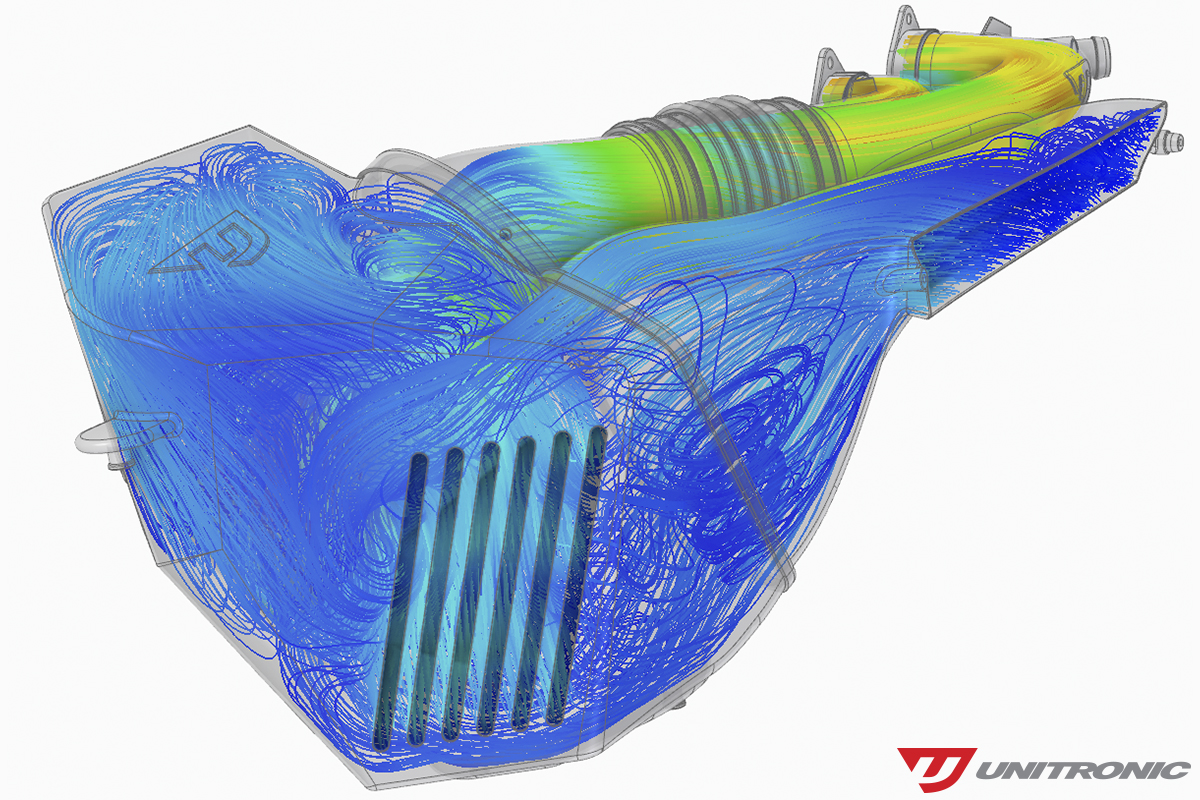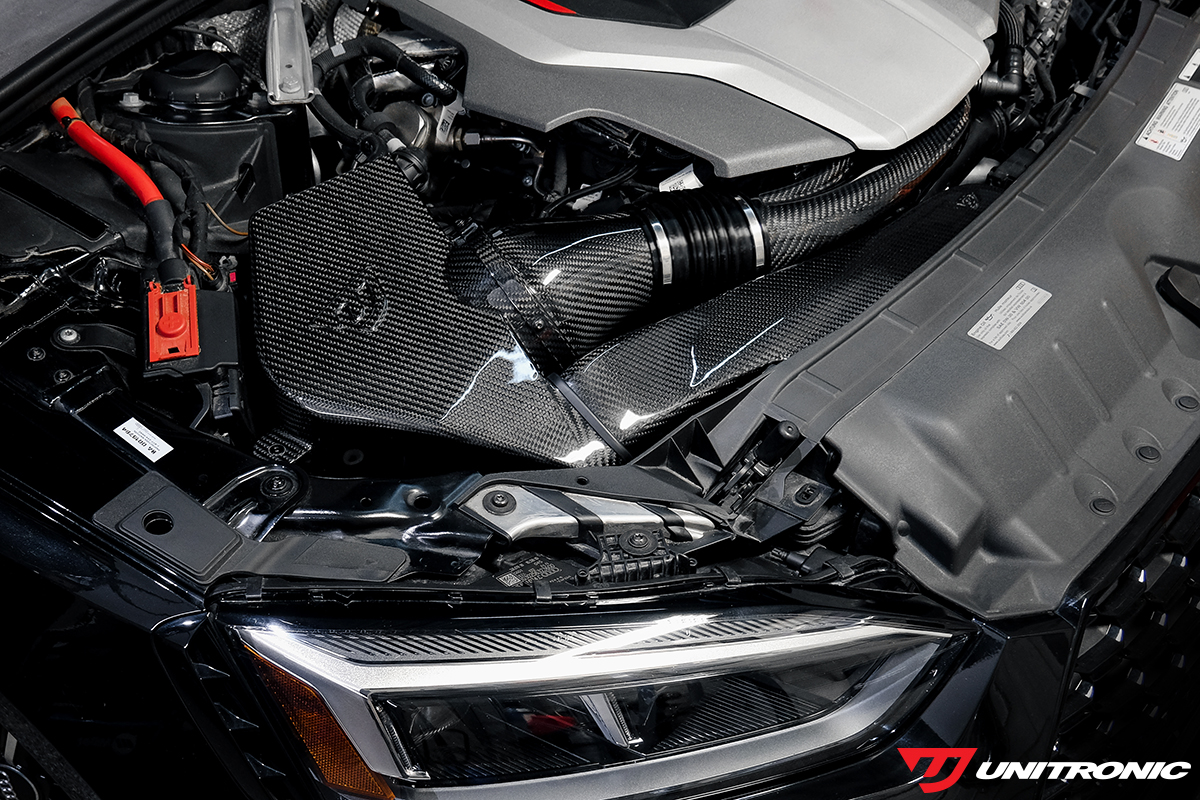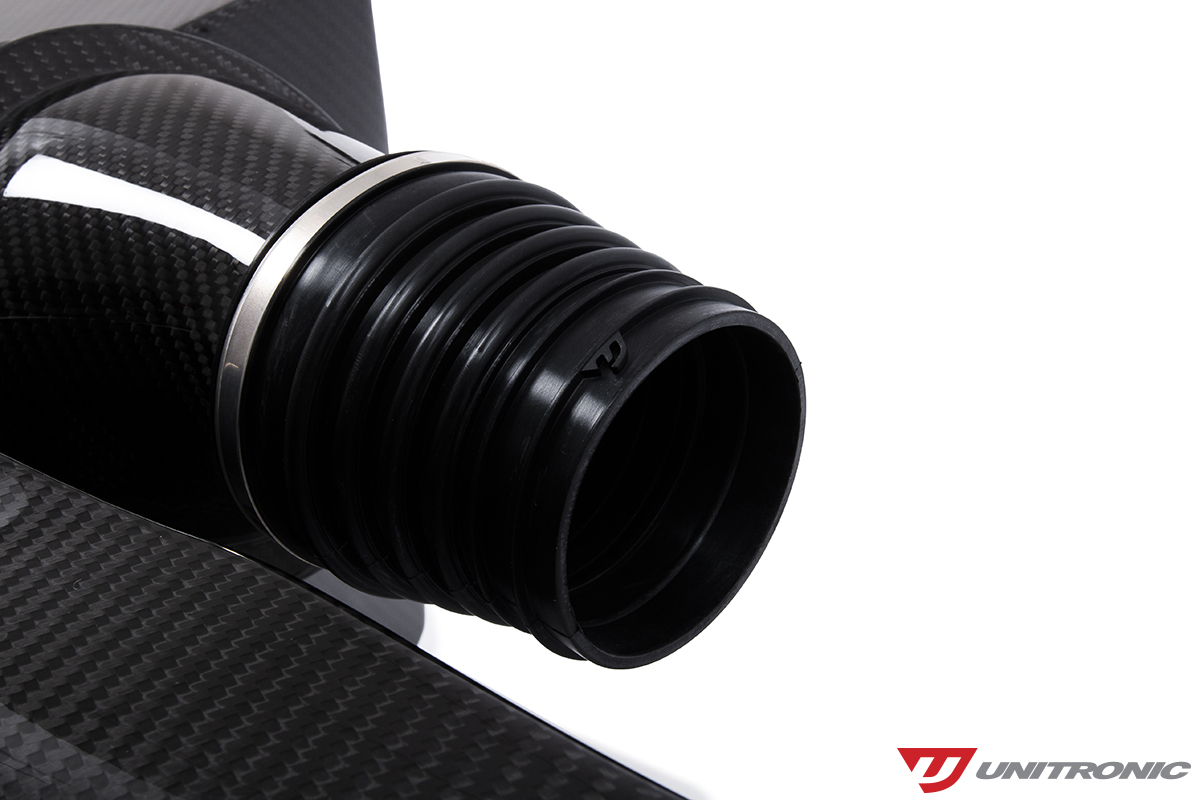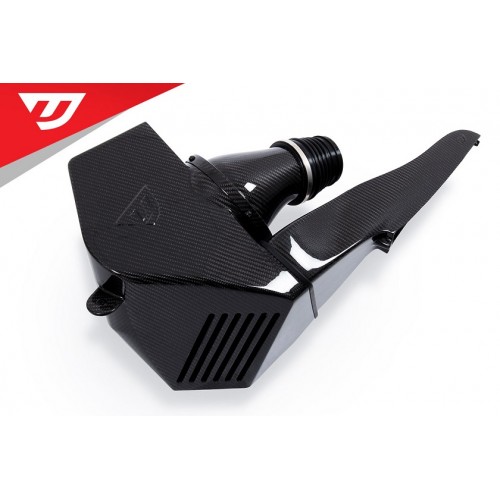Unitronic Carbon Fiber Intake System for B9 RS4/RS5
Product Information
This Carbon Fiber Intake System for the B9 and B9.5 Audi RS 4 and RS 5 provides improved throttle response, seamless integration and perfect fitment while greatly enhancing turbo induction sounds. Its stunning 2/2 twill carbon fiber weave adds a striking presence in the 2.9TFSI engine bay as well.
Features / Benefits
- 2/2 Twill prepreg carbon fiber weave
- Autoclave construction
- EPDM couplers
- High-quality stainless steel hose clamps
- Direct bolt-on fitment with OEM Mounting Locations & EPDM mounting grommets
- Smooth airflow transitions
- Proven airflow gains
Hardware Included
- Unitronic Carbon Fiber Airbox
- Carbon Fiber Air Duct
- Carbon Fiber Transition Tube
- EPDM Flex Coupler
- 6" Tapered Cone Air Filter
- All Necessary Hardware
Optimized Airflow

To validate its form through function; Unitronic engineers strategically used CFD to maximize the efficiency of this Intake System. After countless hours of test fitments and product validations through several iterations, the result is a design that maximizes the room available in the engine bay while exhibiting smooth volumetric transitions where every facet is effectively executed for form and function.
Proven Airflow Gains

Unitronic Hardware Engineers carefully benchmarked the OEM Audi RS5 intake versus the Unitronic Intake in a controlled environment using our in-house Superflow SF-1020 flow bench. Our team observed massive air flow gains of up to 38% with the Unitronic Intake and Turbo Inlet. This drastic air flow improvement allows the turbochargers to work more efficiently and achieve target boost with less stress resulting in improved reliability.
Improved Aesthetics

Constructed of premium Carbon Fiber materials, this complete Intake System offers superior fit and finish, retaining the factory mounting locations and simplifying the installation process using our very own mounting grommets.
High Quality EPDM Couplers

High quality EPDM couplers are utilized in order to allow ample tolerance for engine movement on an item that is both affixed to a dynamic engine and a rigid chassis instead of using traditional rigid silicone.














